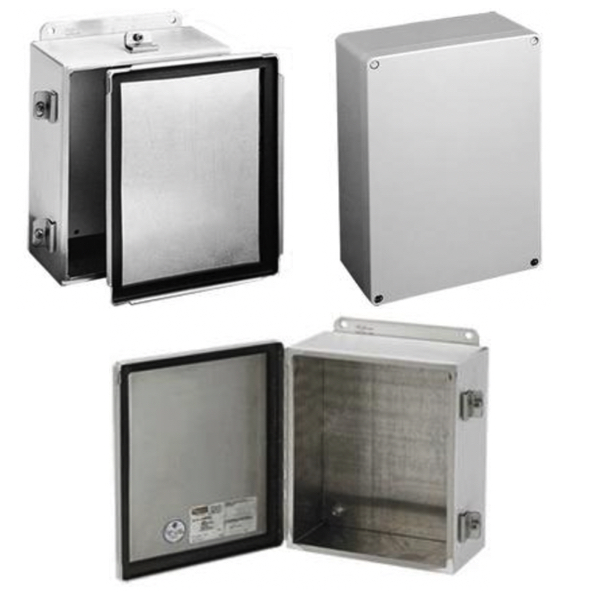Aluminum Enclosures

RSP Supply carries a full line of aluminum electrical enclosures designed for superior protection in industrial and commercial environments. Lightweight yet durable, these enclosures provide excellent corrosion resistance and structural integrity. They are commonly used to house electrical and instrumentation systems that need reliable protection from dust, water, and corrosive agents.
Most aluminum electrical enclosures are NEMA 4X rated and UL listed, making them suitable for harsh indoor or outdoor applications. They feature non-welded seams, tapped holes for easy mounting, continuous aluminum hinges, and gasketed seals to ensure a watertight and secure fit. These features help safeguard critical components from environmental hazards while allowing convenient access through wide-opening doors or removable covers. Aluminum instrument and electrical enclosures are available in a range of sizes and configurations. Their smooth finishes, seamless construction, and IP65 or higher ingress protection ratings make them ideal for use in wet or corrosive conditions. Optional accessories, including mounting flanges, brackets, and panels, allow for customized installation in a variety of operational settings.
FAQs
Q: Are aluminum electrical enclosures UL listed and NEMA 4X rated?
Yes, most aluminum electrical enclosures are UL listed and NEMA 4X rated, providing corrosion resistance and protection suitable for machine and manufacturing environments.
Q: What are the benefits of using aluminum enclosures over steel?
Aluminum enclosures are lightweight, corrosion-resistant, and easier to install, while still providing robust protection in both indoor and outdoor environments.
Q: Can aluminum enclosures be customized?
Yes, aluminum enclosures can be customized with different finishes, mounting brackets, and flange options to meet specific project requirements.
Q: Do aluminum enclosures provide protection against water and dust?
Yes, their gasketed seals and seamless construction provide high ingress protection, typically rated IP65 or higher.
Q: Are aluminum covers available with tapped holes and non-welded seams?
Yes, many aluminum covers include tapped holes and non-welded seams to ensure easy installation and a secure, adaptable fit.
Why Buy Aluminum Enclosures from RSP Supply
RSP Supply offers a wide selection of aluminum electrical enclosures that meet NEMA and UL standards for performance and safety. Our catalog of products provide dependable protection, easy customization, and fast shipping for industrial and commercial applications.

